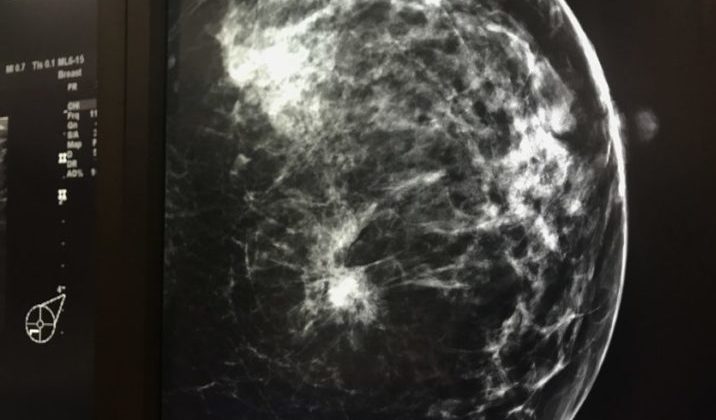Having been inspired to embrace virtual reality as a new creative channel, documentary filmmaker, Victoria Mapplebeck is mixing filmmaking with VR to tell her story of breast cancer (as patient and filmmaker), from diagnosis through treatment to recovery.
She tells us more about The Waiting Room and discusses how virtual reality offers exciting possibilities for storytelling.
VR with documentary filmmaking – a good combination?
The Waiting Room is a documentary film and exhibition-based VR project. It highlights the ways in which VR can offer new and exciting creative possibilities for filmmakers looking to experiment with storytelling form.
As an award-winning documentary filmmaker and Reader in Digital Arts at Royal Holloway, University of London, Victoria has a long and successful career in filmmaking, with a passion for exploring the interface between emotion and technology. As such, immersive tech appealed to Victoria as a new creative channel for her work.
Victoria is fascinated by audience engagement in VR explaining that in this medium, “Users learn through engagement and embodiment, by entering into a scene… it’s a shift from storytelling to story living”. By experiencing innovative VR projects such as Notes On Blindness and Draw Me Close, which she reviewed for The Conversation, Victoria became increasingly interested in integrating CG-based virtual reality into her work as a companion piece to her latest documentary film.
“From a filmmaker’s perspective, what’s brilliant about VR is that unlike any other medium, VR feels like the very early days of cinema, a time when filmmakers are learning the grammar rather than writing the language of VR”.
Victoria goes on to note that, “Documentary Directors working in VR often use traditional techniques such as commentary, past tense first person voice over and music, but these devices often break the place illusion of VR. The story living experience of VR doesn’t sit well with the storytelling techniques of flat film. Now that presence is so powerful I’m looking forward to exploring non fiction form in an entirely different way”.
About Victoria’s latest project
Victoria is using her new-found passion for virtual reality in her latest project; documenting her breast cancer diagnosis and subsequent treatment. Having been diagnosed with breast cancer, Victoria felt that she couldn’t find any content that really reflected her own experiences and so she started to explore her own journey with audio and film recordings. She documented her time in waiting rooms, CT scans, ultrasounds, consultant meetings, chemotherapy sessions and hospital stays.
Victoria also recently gained access to the Histopathology lab at Kings College Hospital and has recorded images of her tumour. Seeing her own cancer cells under the microscope inspired her to consider developing a computer-generated VR exhibition piece to sit alongside her film. She explains, “I’ve always been struck by the beauty of microscopic imaging. Within this VR work when the user embodies the tumour, they will marvel at the beauty of cancer cells as they split and multiply”.
Her plan is to recreate this imagery in 3D, so that her audience can go through a surreal and beautiful journey that challenges the language of illness and the cultural myths that surround this disease. Victoria concludes:
“This project begins with my own intimate telling of a personal breast cancer story but as breast cancer affects one in three women, this will also be a very universal story.”
Developing diverse stories in the immersive tech sector
As virtual reality offers a unique way of connecting with audiences, it is crucial that diverse voices are heard as the sector develops. Victoria’s story highlights the need for a diverse workforce in the immersive tech sector and ways that underrepresented groups can be supported.
Events such as Limina’s diversity workshop have provided Victoria with the inspiration and confidence to work within the VR medium. She explains:
“Attending workshops where there are many women speakers is really refreshing, and made me think this is a world in which I can be part of.”
Moreover, the Limina workshop also highlighted that, as a filmmaker moving into the immersive space, you shouldn’t be deterred if you haven’t technical skills such as Unity. “I was initially put off by how inaccessible VR technology can seem at first glance but hearing from inspirational women in VR such as Catherine Allen and Mary Matheson, I began to feel that I can apply my skills and experience to this new medium; it’s just about using a different lens. If I’ve got a story to tell, why not go for it? I can come up with the ideas and the storytelling – and work with a team to help craft it.”
Finding collaborators who have the right skills, whilst being sensitive to such a personal and emotive subject is crucial. As Victoria comments;
“It is always a challenge working on things that are so personal. It’s been great having Catherine Allen on board as Executive Producer to help address this and find the right team.”

As the VR sector is in its infancy in terms of mass adoption, it provides a tantalising opportunity to create an art form that is relevant and accessible for all. As Victoria’s project highlights, encouraging a diverse range of content creators to experiment and create new and unique VR projects isn’t just an ethical ideal, but of crucial importance in pushing the boundaries of both storytelling and the immersive tech sector as a whole.

